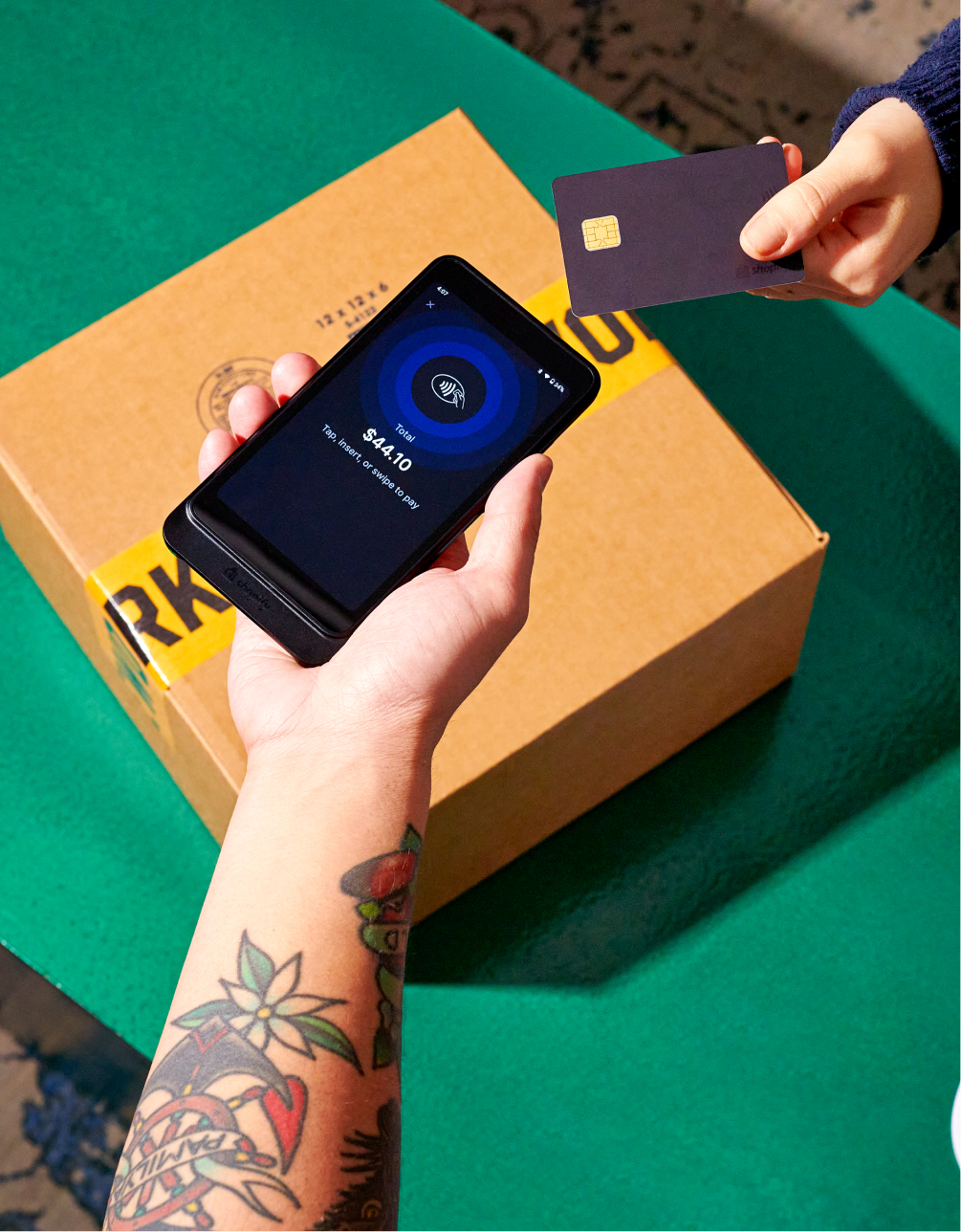

This shipping policy template can help you communicate a shipping policy that sets the right expectations for your customers.
Jun 13, 2024
Some of the most common questions customers ask ecommerce stores are related to order shipping. It's common for shop owners to hear questions like: “How much will shipping cost?” and “When will my order arrive?” Sound familiar? If so, your shop may be in need of a shipping policy that sets expectations about shipping costs and timelines. When you create a comprehensive and accessible shipping policy, it helps both you and your customers—your customers can use it as a self-service FAQ, and you can save time by answering fewer shipping questions. It's best to start with a shipping policy template. This will be a living document for your business—one that you can update and adjust as your operations and circumstances change.
Whether you’re creating a new shipping strategy from scratch or updating your existing policy to curb customer support inquiries, this shipping policy template will get you up and running in minutes.
A shipping policy is a set of terms created by an online retailer that describes how orders are shipped to the customer. Shipping policies typically include domestic and international shipping speed options, delivery times, return policies, payment terms, shipping costs, and estimates for order processing time. Shipping policies typically are included in a company’s terms and conditions, or as a standalone document. It is not uncommon to update your policy every few months, especially when you add new shipping carriers, expand your fulfillment network, or anticipate delays based on issues like order volume or supply chain issues.
Above all, don’t make customers comb through your shipping policy page for the information they need. Whenever possible, make it easy to navigate, with clear subheadings, tables, bolded text, and links to learn more.
💡 PRO TIP: Communicating shipping speeds at checkout to your customers can help improve cart conversion, provide clarity and transparency, and increase consumer confidence. Learn more about how to add shipping speeds directly from your Shopify Admin.
Every shipping policy is different—there is no one-size-fits-all approach. We highly recommend you cut, adapt, expand, or rearrange the following sections in this sample shipping policy template to suit your business’s unique needs.
Get your free shipping policy template
Ensure your essential shipping details are clear and easy to find with our shipping policy template.
The following shipping policy page examples can serve as inspiration for some of the ways you can customize your own policy on your online store. We’ve included various shipping contexts so you can see how different circumstances translate into different policies.
Many brick-and-mortar stores have embraced shoppers in their community by offering local delivery and buy online, pickup in-store shipping options. These options each come with their own unique set of steps that must be clearly communicated to ensure a smooth customer experience.
If you’re relying heavily on business from your local customers, you can also list the ZIP/postal codes you service, or embed a map on your shipping page to communicate your local delivery ranges visually. Magnolia Bakery even has dedicated landing pages to help customers find baked goods that can be picked up or locally delivered on the same day.

Gifting brand Goodee splits its shipping policy across multiple pages. Its main shipping page is designed around the needs of the majority of its customers, but its FAQ page also links out to supporting pages where international customers can get more details about order processing and shipping.

In some cases, delivery timelines need to be made explicitly clear for the customer. For example, if your products are frequently purchased as a gift for holidays or events, timely arrival is paramount to customer satisfaction.
Cookware retailer Our Place does a great job in this area. They break down their delivery timelines for pre-ordered products, so customers know how long of a delay to expect before they decide to order a product.

If you’re selling internationally, help overseas customers understand your shipping policy by personalizing a landing page for it.
For example, Gymshark has a generic delivery policy page, but they've also included a dropdown menu for customers to select their package's destination country. That option provides more personalized answers, such as: how long it takes for international orders to arrive, available international shipping methods, whether the parcel needs a signature to complete delivery, and how much shipping will cost.

Data shows that as much as 62% of Americans won’t buy something online if free shipping is not an option. At first glance, it may seem counterintuitive to offer free shipping to make a profit, but that hunger for free shipping is actually a rich opportunity for upselling. For example, Beardbrand takes advantage of this opportunity on its shipping policy page.
Beardbrand launched Alliance, a branded membership and community that costs $90. Only those who buy directly from the brand three times or spend $150 on a single order get an invitation to join the exclusive club—a potentially huge money-maker that encourages customer retention.
Their FAQ page is the perfect place to mention the Beardbrand Alliance. In a question titled “Why did shipping costs increase?” the retailer upsells its membership to price-sensitive customers looking for cheaper shipping rates.

Speed up fulfillment times with Shopify
Shopify comes with built-in tools to help you track, prioritize, and fulfill orders from one place, so you can get orders out the door sooner and exceed customer expectations.
It's best practice to display your shipping policy at multiple customer touch points. It shouldn't live only on your shipping policy page. Instead, make it easier for customers to find the information they need by communicating your shipping policy wherever these questions may make customers hesitate about making a purchase.
The following are a few ideas for where you can repurpose your shipping policy template to make it easier for customers to complete their purchase.
When you’re anticipating shipping delays or a higher volume of orders, one of the most effective ways to be transparent with customers is by communicating delays through your website announcement bar. These are banners that can typically appear at the top of an ecommerce store's pages. Banner options are built into many Shopify themes, but you can also add them to your store via a Shopify app of your choice.
In addition to shipping delay updates, you can also use this real estate on your website to highlight any incentives that might compel customers to make a purchase. For example, use a banner to highlight free shipping for orders over $75, or announcement $5 flat-rate shipping to the US and Canada.
Your footer is likely the first place a customer will look to find your shipping policy, along with other links to access self-serve customer support.
If shipping is a particularly important concern for your customers, it might be best to incorporate your shipping page into your website navigation’s dropdown menu to ensure it is more discoverable. However, in most cases, a link in your footer should suffice.

Questions about shipping often come up as customers are browsing your product pages. Consider including high-level information about your shipping policy on each product page. For example, write up one line about your free shipping incentive, or add a dedicated product page tab for more detailed shipping info.
An FAQ page isn’t just for troubleshooting customer issues. It’s also the perfect place to highlight aspects of your shipping policy that could win over uncertain customers, such as your return policy or your free shipping threshold.

At checkout, when customers are choose their shipping options, it's useful for them to see how long each shipping option takes. For example, your standard shipping option could take 5-7 business days, while a more expedited tier could take only 2 days. Having that information makes it easier for customers to select the best option for them. Including this information at checkout could be especially useful if you offer delivery timelines that are longer than a week and want to reduce the number of customers who reach out asking about their orders.
Trust is the cornerstone of running a successful ecommerce business, and your shipping policy ensures both you and your customers are on the same page.
Being transparent and upfront when setting expectations helps customers decide to buy from you, and when the unexpected happens and your business operations change, your shipping policy template helps you maintain that hard-earned trust.
If shipping feels like too big of a hassle to maintain yourself, there’s always the option to outsource it. Shopify Fulfillment Network can connect your online store with Flexport, a leading logistics company that will pick, pack, and ship orders directly to your customers—no intervention required.
The best part: It offers flexible delivery speed options and competitive shipping rates, so you’ll only pay for what you need.